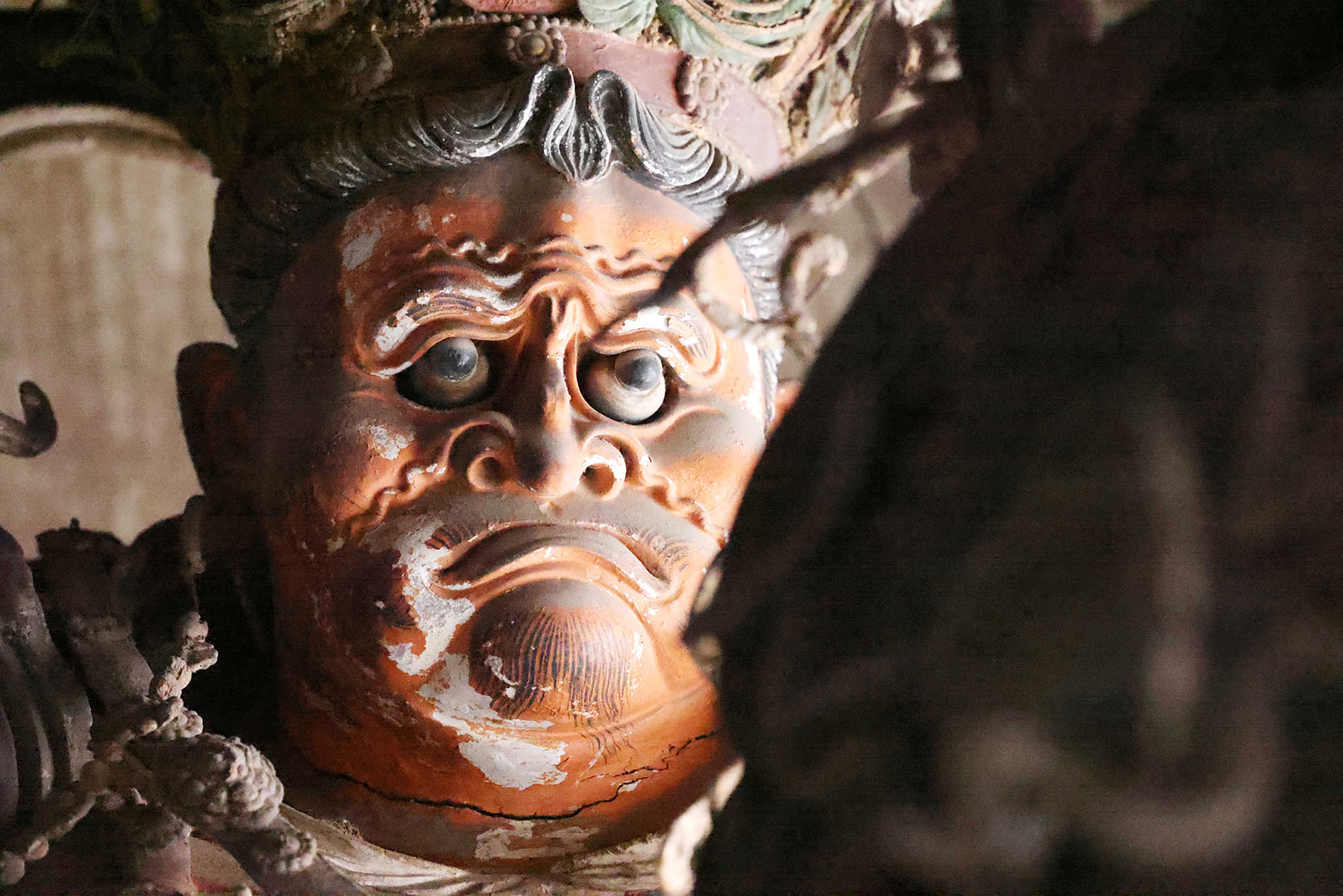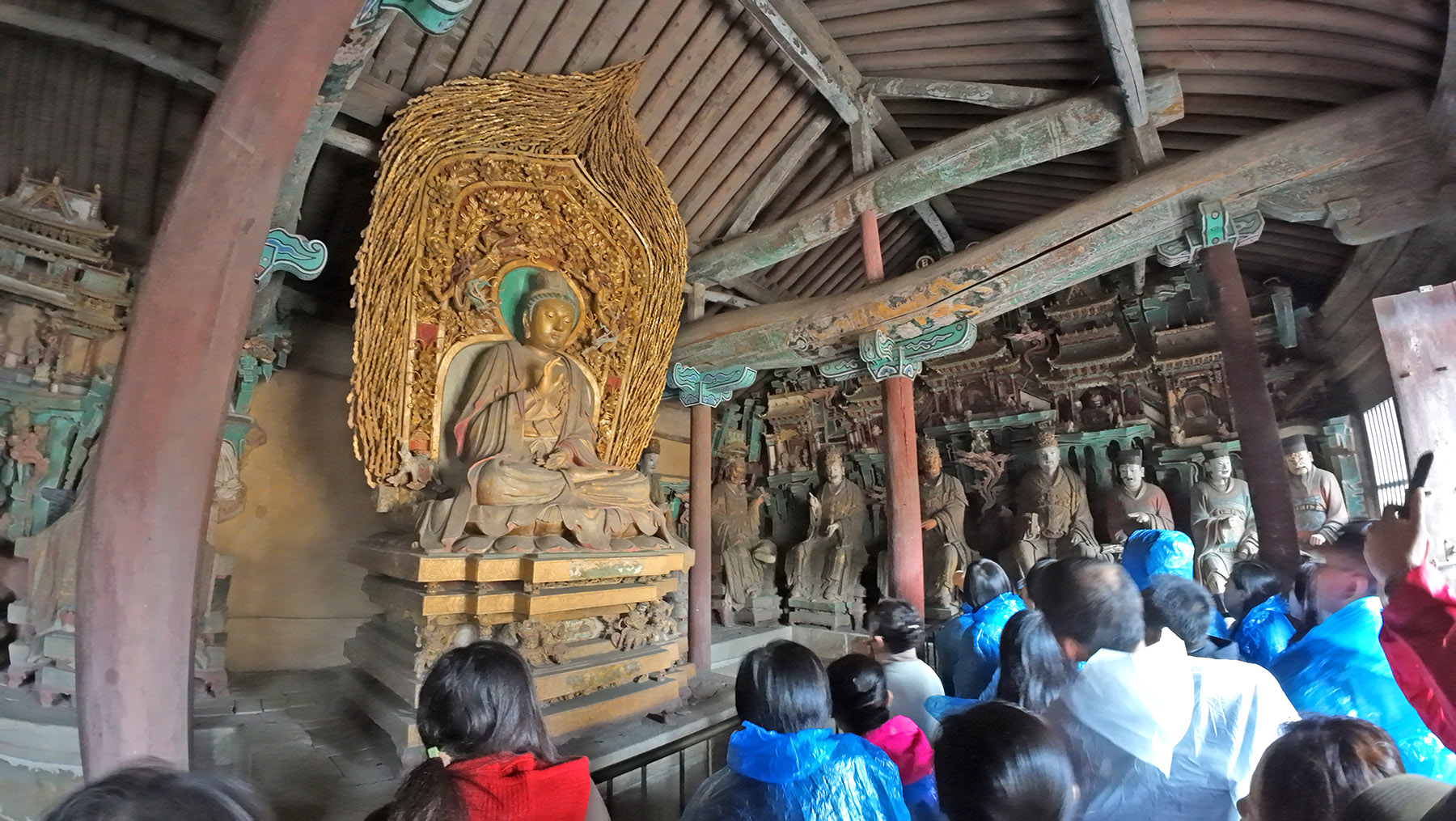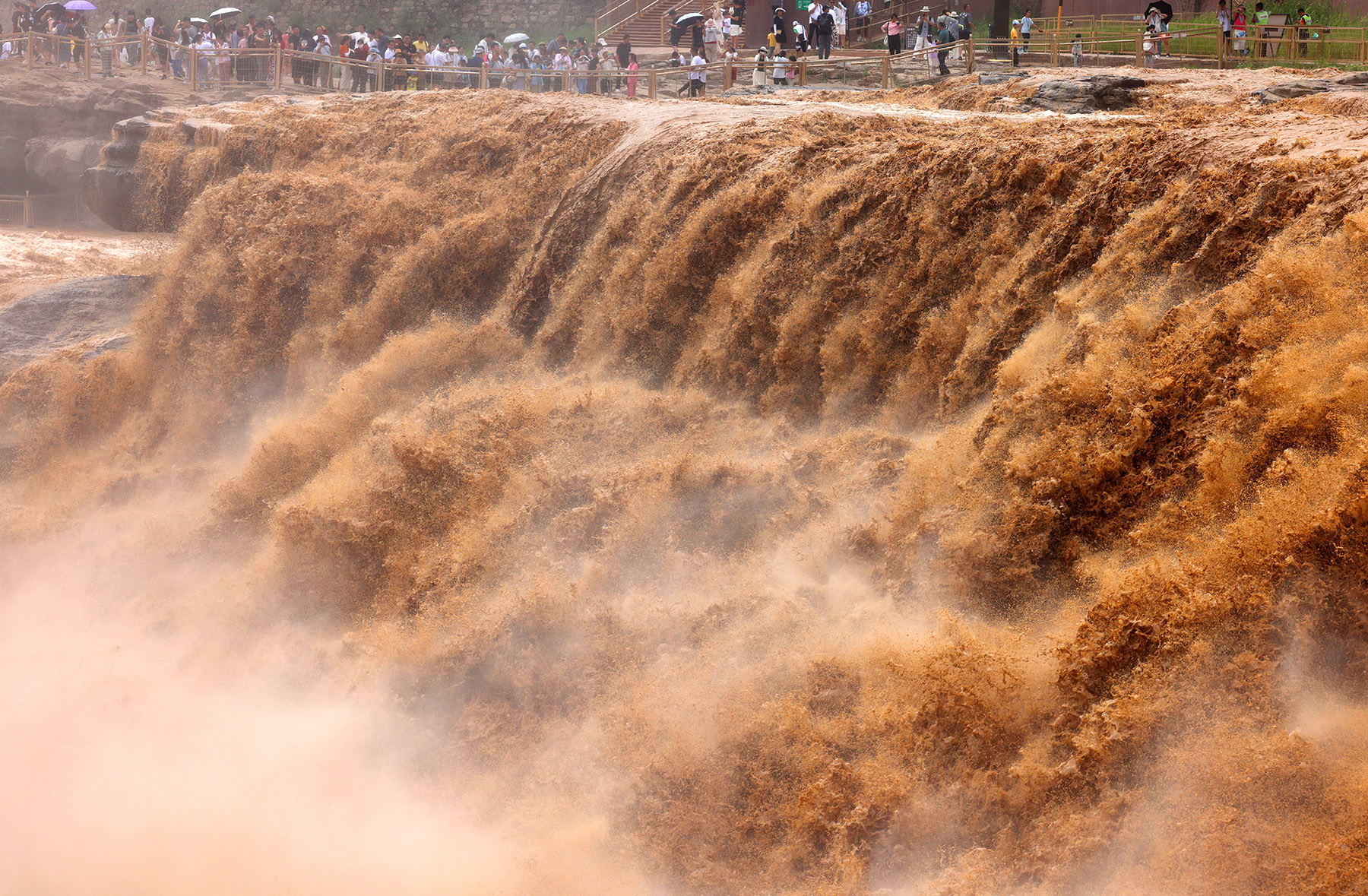Director's vision turns childhood memories into a catalyst for tourism

The recent animated blockbuster Nobody is setting records and moving audiences to tears. Its retelling of the classic tale Journey to the West, colored with references to real-world locations, is inspiring some to make their own journey.
The story follows a pig and a toad, two overlooked yaoguai (supernatural beings) who run afoul of their boss at Langlang Mountain. Escaping capture, they team up with a weasel and an ape to form a group modeled after the Monkey King and his companions.
Hoping to gain immortality, the quartet sets out to obtain Buddhist scriptures. Along the way, they fight evil, save lives, and come to believe they are true Buddhists. But when unmasked as impostors, they are condemned as frauds. In the end, they sacrificed themselves to save a group of children — yet remain unnamed.
READ MORE: Buddha's gaze into eternity
"This is not a cartoon, this is me looking in the mirror," one netizen commented. The film critiques how society favors the privileged, like the heroes of Journey to the West, while marginalizing those of humble origins. It also satirizes the workplace grind and clients' demands, while probing the universal desire to become something greater.
By Sept 18, the film, which premiered on Aug 2, had earned 1.61 billion yuan ($226 million), according to ticketing platform Maoyan, making it the highest-grossing domestic 2D animated film in Chinese history.

Routes on a theme
The film's popularity has sparked renewed interest in the depicted settings, which are based on existing locations. Li Zao, the film's chief producer, drew inspiration from around Shanxi province, including the majestic landscapes of the Taihang Mountain Grand Canyon, the murals at Yong'an Temple, and the architecture of Foguang Temple dating back to the Tang Dynasty (618-907).
Recently, the province's Department of Culture and Tourism partnered with Shanghai Film Infinity, a subsidiary of Shanghai Film Group, to promote the blockbuster. The province has created two travel itineraries inspired by the film that highlight natural and historical sites across the region.
With the theme "Come to Shanxi and find the version of yourself you love", the campaign links the film's IP to 10 real-life Shanxi sites. The itineraries include a three-day northern route focused on temples and grottoes and a four-day southern route highlighting nature.
Tourists can pick up pocket-sized booklets that combine a "role test" with a stamp-collection game. After filling out a questionnaire about travel habits, visitors are matched with characters in the film. Collecting stamps at designated spots earns them co-branded souvenirs and limited-edition seals featuring characters.
In late August, tour guide Lyu Wei from Shanxi Yaowang Travel Agency led the first group of tourists to explore the northern route.
Lyu compared this campaign with traditional tours, saying that it emphasizes a more emotional connection.
"I felt every tourist resonating with the characters," he said. "It's like: 'What if I were a faceless yaoguai? I'd hold my head high and march forward boldly.' Everyone dared to shed prejudices, stay true to themselves and walk their own path without worrying so much about others' opinions. That spirit showed throughout the trip."
Tourist Lu Jianhong, 35, from Jinzhong, Shanxi, said he was impressed by the ancient buildings in the film, and visited Foguang Temple with "a sense of pilgrimage".
"Entering the temple and standing on the central axis, I saw the East Hall towering on the high slope — majestic, ancient and grand. It was a feeling of wonder that words cannot fully capture," he said. "The real temple is even more magnificent and ancient than how it was portrayed in the film. It gave me a feeling of dreaming back to the Tang Dynasty."
Built in 857, Foguang Temple preserves four Tang-era forms: architecture, sculpture, murals and calligraphy. "It is a unique treasure trove of art, history and culture unparalleled anywhere else in the country," said Wang Ning, a relics protection worker at the temple.
According to Wang, it is the largest and best-preserved wooden Tang structure in China, and it was inscribed on the UNESCO World Heritage List in 2009.
Visitor Li Lingxia said the animated film drew her to the Taihang Mountain Grand Canyon in Changzhi city's Huguan county.
"The layered ink-painting style of the mountains and the sense of adventure in crossing mountains and ridges depicted in the animation deeply resonated with me," she said. "When I saw the serene lake at Eight Springs Gorge, the natural caves of the North Gate, and the glass viewing platform, I was captivated by the enchanting atmosphere. Nature felt alive with spirit."
Another traveler, Zhang Jun, met a couple who were also fans of the film.
Zhang said: "We started chatting about the scene where the yaoguai patrol the mountain along the stream, and realized we were all looking for its real-life counterpart. A passing tour guide overheard our conversation and pointed to a nearby peak that looked identical to the one in the film.
"We followed his suggestion and took photos — the rocks matched perfectly. Bonding over a shared IP was far more memorable than any staged interaction."
Cheng Kaixian, general manager of Shanxi Taihang Mountain Grand Canyon Tourism Development, said the site has partnered with several films and TV operas, boosting tourist numbers.
"Directors often use the peril of Eight Springs Gorge's 100-foot abysses to symbolize the challenges faced by characters, and its waterfalls as metaphors for vitality and emotional flow," she said.
The canyon plans to launch a themed route called Journey to the West: Eight Trials at Eight Springs, featuring eight iconic landmarks woven into challenge-based tasks, such as a kayak race.
"Film and television are dynamic calling cards for scenic areas," she said. "The key is linking attractions with storylines and technology so visitors become protagonists, not just spectators."

Source of inspiration
At a roundtable discussion in Taiyuan, the provincial capital, Yu Shui, director of Nobody, explained why Shanxi became the setting: "Because I was born and raised here. Everything I saw, thought, and experienced as a child, including the historical sites my parents took me to, stayed with me."
"Even though I might not have fully understood them back then, as I grew older, I began to feel a deep, almost instinctive resonance with this heritage," he added.
Yu recalled visiting Foguang Temple for inspiration, saying that the weather had been particularly beautiful that day, with clear blue skies and white clouds. As he climbed the steps and saw the East Hall, he had been deeply moved and had truly felt like crying. He said that it gave him a sense of psychological connection, as if he could resonate with the ancient builders and artisans from more than 1,000 years ago.
To forge a uniquely Chinese animation aesthetic, Yu and his team conducted extensive field research across Shanxi to translate its ancient architecture onto the big screen. They even borrowed the name of the real-life village of Beizhang.
He added that integrating Shanxi landmarks and traditional architecture was primarily a narrative choice to add depth and beauty to the project.

Cultural treasures
Shanxi leads China with 531 State-level cultural relic protection units. Around 85 percent of the nation's existing wooden structures that were built in the Yuan Dynasty (1271-1368) or earlier are located in the province, according to the Shanxi Cultural Relics Bureau.
"With more than 3,500 ancient villages, Shanxi preserves generations of joys and sorrows within its blue bricks and black tiles," said Wang Aiqin, head of the Shanxi Department of Culture and Tourism. "Every stone slab tells a story of the past. Detachment, tranquility, antiquity and harmony embody the unique charm of Shanxi."
Shanxi has consistently inspired literary and cinematic art, from the classic 1964 animated film Havoc in Heaven to 2024's international hit video game Black Myth: Wukong, both of which similarly adapted Journey to the West.
"The collaboration between Shanxi and Nobody could become a benchmark for integrating cultural tourism IPs in China," said Gan Lu, a researcher at the Hainan Culture and Tourism Integration Product Design and Development Base.
"It merges modern animation with Shanxi's profound historical and cultural heritage," she said. "Across Shanxi, there are numerous temples and grottoes preserving a wealth of vivid and unique sculptures and murals, providing a solid historical and cultural foundation for virtual IP. The shift from sightseeing to immersive experience extends stays and boosts spending."
ALSO READ: Tech livens up Shanxi's ancient landscape
Gan added that combining film, television and tourism marks the arrival of the experience economy era, in which providing consumers with emotional satisfaction and lasting memories is the core focus. It is a form of advanced content marketing that transforms cultural emotion into economic value, she said.
According to a market report released by travel agency Ctrip in late August, searches for Nobody's featured settings surged 380 percent year-on-year, boosting tourism orders in Datong, home to many ancient temples, by 40 percent.
"Cultural relics inspire animation, games and films, while those works add value and help sustain relics," said Zhang Jin, president of the cultural relics preservation and adaptive utilization division at the Tsinghua Tongheng Planning and Design Institute in Beijing.
"With modern online cultural products being embraced by young audiences, little-known relics gain popularity," she said. "The influence of IP expands to a broader space with more potential for commercialization."
Contact the writers at chenmeiling@chinadaily.com.cn


